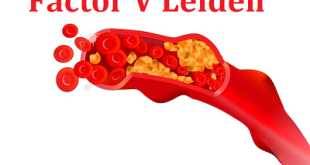What is Foot Drop?
Foot drop, also known as drop foot, is a medical condition characterized by the inability to lift the front part of the foot and toes effectively while walking or attempting to raise the foot. This results in a noticeable dragging of the foot along the ground or an awkward high-stepping gait. It is often caused by underlying nerve damage, particularly to the peroneal nerve which controls the muscles responsible for lifting the foot. This nerve damage can be the result of various factors, including nerve compression, injuries, certain medical conditions such as peripheral neuropathy, and even neurological disorders like multiple sclerosis or stroke. Foot drop can significantly impact a person’s mobility, stability, and quality of life, making it challenging to perform everyday activities that involve walking and maintaining balance.
Types of Foot drop
It can be categorized into different types based on its underlying causes and characteristics. Here are some common types are as follows:
- Neurological Foot Drop: This type of foot drop is caused by damage or dysfunction of the nerves that control the muscles responsible for lifting the foot. Conditions like peripheral neuropathy, nerve compression (e.g., due to herniated discs), and certain neurological disorders (e.g., multiple sclerosis) can lead to neurological foot drop.
- Muscular Foot Drop: Muscular foot drop occurs when there is weakness or paralysis in the muscles responsible for dorsiflexion (lifting the foot). This can result from muscular disorders like muscular dystrophy, myopathies, or injuries that affect the muscles in the lower leg.
- Common Peroneal Nerve Injury: The peroneal nerve controls the muscles involved in lifting the foot. Injury or compression of this nerve can lead to foot drop. Common causes of peroneal nerve injury include trauma, prolonged pressure (as in crossing the legs), and surgery.
- L5 Nerve Root Compression: Compression of the fifth lumbar nerve root in the spine can result in foot drop. This can be due to conditions like herniated discs or spinal stenosis affecting the lower back.
- Central Foot Drop: Central foot drop occurs when there’s a problem in the central nervous system, such as the brain or spinal cord. Conditions like strokes, multiple sclerosis, and spinal cord injuries can lead to this type of foot drop.
- Ischemic Foot Drop: Ischemic foot drop is caused by reduced blood flow to the nerves or muscles involved in foot movement. This can result from conditions like peripheral artery disease.
- Hereditary Foot Drop: In some cases, foot drop can have a genetic or hereditary component, leading to weakness in the muscles responsible for foot dorsiflexion.
- Foot Drop due to Trauma: Trauma to the lower leg, knee, or foot can directly damage the nerves or muscles involved in foot movement, leading to foot drop.
Epidemiology
The incidence of fibular neuropathy occurrence varies. One study documented a prevalence of 19 cases per 100,000 individuals, displaying a higher occurrence in males compared to females. Post total knee replacement, the reported incidence stands at 0.79, slightly skewed towards males at a ratio of 2.8 to 1. Typically, 90% of cases manifest as unilateral conditions, affecting both the right and left sides equally.
Amyotrophic lateral sclerosis (ALS) – The annual global frequency of new ALS cases is estimated at 1.54 cases per 100,000 individuals. While ALS can manifest across all age groups, its peak incidence arises between 50 and 75 years of age. The precise occurrence of mononeuritis multiplex remains unknown both in the United States and internationally. For acute inflammatory demyelinating polyneuropathy (AIDP), the reported yearly incidence ranges from 1.0 to 1.2 cases per 100,000 individuals, with a linear increase linked to age. Notably, men experience around 1.5 times higher prevalence than women.
Pathophysiology
To grasp the underlying mechanisms and predict the eventual outlook of peripheral nerve injuries, an understanding of nerve injury classification proves essential. Seddon in 1943 and Sunderland in 1953 introduced the subsequent categorization: (1) neurapraxia, (2) axonotmesis, and (3) neurotmesis.
Neurapraxia entails the impairment of myelin with preserved axons. The endoneurium, perineurium, and epineurium remain undamaged. Nerve signal conduction is disrupted at the injury site, translating to sensory loss and weakness. Electromyography (EMG) reveals extended latency and sluggish nerve conduction speed at the compressed area. This type of injury boasts the most favorable recovery potential.
Axonotmesis involves axonal harm while keeping the epineurium and perineurium intact. Affected nerves exhibit sensory and motor deficits beyond the injury point. Over an extended period, recuperation is possible but not guaranteed to be complete. Neurotmesis represents the gravest nerve injury category. Myelin, axons, and supportive connective tissue all suffer damage. Wallerian degeneration unfolds distal to the injury site, leading to apparent sensory and motor deficits. Spontaneous recovery remains implausible, often necessitating surgical measures like nerve grafting or tendon transfer.
Symptoms of Foot Drop
The main symptom is noticeable difficulty in lifting the front part of the foot, causing it to drag or drop when walking. This can lead to a distinctive high-stepping or slapping gait as the individual tries to compensate for the lack of proper foot movement. Other symptoms and sensations that may accompany foot drop or indicate an underlying cause include:
- Difficultly lifting front part of foot
- Foot may drag on floor when walking or cause frequent falls
- Steppage gait- raising foot very high when walking to avoid dragging foot on the ground
- Slapping of the foot while walking
- Numbness on top of foot and toes
- May or may not be associated with Sciatica. If so, may have pain down the leg radiating from from the back down towards the foot.
Causes of Foot drop
It usually occurs when there is a problem with the nerves in the lower spine, leg, or foot or the muscles of the leg and foot.
Neurological causes
Typically, if the heel strikes the floor first as the foot lands, a dysfunction of the lower spinal nerve root(s) or peripheral nerve(s) may be suspected. 3 Neurological causes may include one or more of the following:
- Radiculopathy: Symptoms following nerve root irritation or compression in the lumbar spine, for example, radiculopathy of the L5 nerve root
- Neuropathy: Damage to a peripheral nerve in the leg at any point along its path, for example, neuropathy of the common peroneal nerve, deep peroneal nerve, or the sciatic nerve
- Lumbosacral plexopathy: Damage to a group of nerves (plexus) in the lumbar and sacral spine
It may also occur when the nerves in the leg and/or feet are damaged due to systemic conditions or genetic disorders. A few examples include diabetes, vasculitis (inflammation of blood vessels), and hereditary neuropathy with liability to pressure palsies (HNPP). Rarely, a tumor, blocked blood vessel, or bleeding in the brain may cause foot drop.
Muscular causes
If the toes strike first as the foot lands on the floor, the cause may be weakness or paralysis of the pretibial, peroneal, or hip flexor muscles.
Foot drop vs. flail foot
While foot drop typically causes severe foot weakness, bending the foot downward or turning it to the left and/or right side is usually possible with some degree of weakness.
It is important to distinguish foot drop from flail foot, where no ankle and/or foot movements are possible in any direction. A flail foot may indicate a more serious condition or a medical emergency, such as cauda equina syndrome or stroke.
Risk factors
The risk factors are as follows:
- Nerve or Muscle Damage: Anything that hurts the nerves or muscles in your leg can raise the risk of foot drop.
- Injuries: Getting hurt in your lower leg, knee, or foot can lead to foot drop.
- Nerve Disorders: Conditions like multiple sclerosis or diabetes can harm the nerves and make foot drop more likely.
- Surgery: Certain surgeries in your leg or knee can accidentally damage the nerves that control foot movement.
- Muscle Disorders: If you have muscular problems like muscular dystrophy, your risk of foot drop can be higher.
- Stroke or Spinal Cord Issues: If you’ve had a stroke or a spinal cord injury, the communication between your brain and muscles might be affected, increasing the chance of foot drop.
Complications of Foot Drop
It can lead to several complications that can affect a person’s mobility, balance, and overall quality of life. Some of the potential complications of foot drop include:
- Gait Abnormalities: Foot drop can result in an abnormal walking pattern. People with foot drop often have to lift their legs higher than usual or swing their leg out to the side to avoid dragging the toes, which can lead to an uneven and awkward gait.
Foot drop gait cycle
- Trips and Falls: Because the foot cannot be lifted properly, there is an increased risk of tripping over obstacles or uneven surfaces. This can lead to falls, which can result in injuries such as sprains, fractures, or head injuries.
- Reduced Mobility: Foot drop can limit a person’s ability to walk and move around freely. This can lead to decreased physical activity, reduced independence, and a lower quality of life.
- Muscle Imbalances: When the muscles responsible for foot dorsiflexion (lifting the foot) are weakened or not functioning properly, it can lead to imbalances in muscle strength and coordination in the leg and foot.
- Joint Problems: The altered gait caused by foot drop can put added stress on other joints, such as the hips and knees, potentially leading to joint pain, instability, and increased wear and tear.
- Skin Issues: The constant dragging of the foot can cause friction and pressure on the toes and top of the foot, leading to blisters, calluses, and skin breakdown.
- Loss of Confidence: Dealing with an altered walking pattern and the fear of falling can lead to a loss of confidence in one’s ability to move around safely and independently.
- Social and Emotional Impact: Foot drop and its associated limitations can affect a person’s social interactions and emotional well-being. It may lead to feelings of frustration, embarrassment, and isolation.
- Difficulty with Activities of Daily Living: Foot drop can make everyday activities such as climbing stairs, getting in and out of vehicles, and putting on shoes more challenging.
- Secondary Muscular Changes: Over time, the muscles that are not being used properly due to foot drop can experience atrophy (muscle wasting) and weakness.
Diagnosis
The diagnosis of foot drop involves a comprehensive assessment that includes clinical evaluation, medical history, physical examination, and potentially additional diagnostic tests. Here’s an outline of the diagnostic process for foot drop:
Medical History
The doctor’s initial step involves understanding your medical background and current condition:
- Symptom Discussion: Gathering information about the symptoms, including their onset, duration, and any factors exacerbating or relieving them.
- Injuries and Surgeries: Inquiring about any recent traumas, surgeries, or injuries that might be relevant.
- Medical Conditions: Exploring the presence of underlying medical conditions, like diabetes or neurological disorders.
- Medications: Discussing medications you’re taking, as some can contribute to nerve-related issues.
Physical Examination
A comprehensive physical assessment to evaluate your overall condition:
- Gait Assessment: Observing your walking pattern to identify abnormalities.
- Muscle Strength: Testing the strength of muscles in your legs and feet.
- Reflexes: Checking reflexes, such as the knee-jerk reflex.
- Sensation: Evaluating your ability to feel different sensations in the foot and leg.
- Coordination: Assessing your muscle coordination and balance.
- Weakness and Atrophy: Identifying any muscle weakness or wasting.
- Muscle Tone: Checking for abnormal muscle tension.
Neurological Examination
A focused examination of the nervous system to identify potential issues:
- Cranial Nerves: Evaluating the function of cranial nerves through specific tests.
- Motor and Sensory Function: Testing your ability to move and feel in specific ways.
- Reflex Testing: Performing reflex tests to assess nerve responses.
- Nerve Function Tests: Conducting specialized tests to determine nerve function and pinpoint problem areas.
Foot and Ankle Examination
An assessment of the affected area to identify specific foot drop characteristics:
- Position and Movement: Examining the position and mobility of the foot and ankle.
- Forefoot Dropping: Identifying the hallmark sign of foot drop, where the front of the foot cannot be lifted.
Imaging Studies
Utilizing imaging techniques to visualize internal structures:
- X-rays: Using X-rays to capture images of bones and detect fractures or structural abnormalities.
- MRI (Magnetic Resonance Imaging): Employing MRI scans to get detailed images of soft tissues, nerves, and muscles.
- CT Scans: Using CT scans to create cross-sectional images for a better view of bone and tissue structures.
Electromyography (EMG) and Nerve Conduction Studies (NCS)
Specialized tests to assess nerve and muscle function:
- EMG: Measuring muscle electrical activity to identify nerve-related issues.
- NCS: Evaluating the speed of nerve signals to diagnose nerve damage.
Blood Tests
Checking for underlying medical conditions through blood work:
- Blood Testing: Conducting tests to identify factors like diabetes, vitamin deficiencies, or autoimmune disorders that could impact nerves.
Other Specialized Tests
In some cases, additional tests might be required:
- Nerve Biopsies: Taking a small sample of nerve tissue for examination.
- Lumbar Punctures (Spinal Taps): Collecting cerebrospinal fluid for analysis.
- Genetic Testing: Investigating genetic factors contributing to the condition.
Collaboration with Specialists
Referral and coordination with specialized healthcare providers:
- Specialist Referral: If needed, referring to neurologists or orthopedic specialists for further assessment and treatment.
Remember, diagnosing foot drop necessitates the expertise of skilled healthcare professionals and often involves collaboration among specialists to pinpoint the exact cause and devise an effective treatment plan.
Treatment for Foot Drop
Treatment for foot drop depends on the cause. If the cause is successfully treated, foot drop might improve or even disappear. If the cause can’t be treated, foot drop can be permanent.
Treatment might include:
- Braces or splints. A brace on your ankle and foot or splint that fits into your shoe can help hold your foot in a normal position.
- Physical therapy. Exercises can strengthen your leg muscles and help you maintain the range of motion in your knee and ankle. These exercises might improve gait problems associated with foot drop. Stretching exercises are particularly important to prevent the stiffness in the calf and heel.
- Nerve stimulation. Sometimes stimulating the nerve that lifts the foot improves foot drop.
Surgery
If orthotics or physical therapy don’t sufficiently manage the condition, there are several surgical solutions that may help, including:
- Tendor transfer. This involves transferring a tendon that usually goes to a different part of the foot and directing it instead to the top of the foot to replace the tibialis anterior.
- Ankle fusion. This type of surgery fuses the foot and ankle to remove the burden from the surrounding muscles. However, this procedure reduces the flexibility of the ankle.
- Nerve graft or transfer. This procedure is focused on repairing damaged nerves by replacing them with healthy nerves.
- Peroneal nerve decompression. This surgery is used to treat peroneal nerve entrapment, a common cause of drop foot, by reducing pressure on the nerve.
- Lumbar decompression. This type of procedure relieves pressure on the nerves of the lower back. It usually involves removing small sections of bones from the vertebrae or from discs in the spine.
All surgeries carry risks, so it’s important to reach out to your doctor about all your treatment options. If you’re going to have surgery, be sure to understand the risks, benefits, and long-term results of your choice.
Prevention of Foot Drop
While you might not be able to prevent all causes of foot drop, there are some steps you can take to lower the risk:
Prevent Injuries
- Stay cautious to avoid leg or foot injuries.
- Be mindful of activities that could harm your lower extremities.
Manage Health Conditions
- Work closely with your doctor to control conditions like diabetes, multiple sclerosis, etc.
- Proper management can reduce the risk of nerve and muscle damage.
Regular Exercise
- Engage in exercises that strengthen leg and foot muscles.
- Focus on exercises that improve balance and flexibility.
Choose Proper Footwear
- Wear well-fitting shoes that provide good support.
- Avoid high heels and shoes that could increase the risk of tripping.
Avoid Tight Clothing
- Refrain from wearing tight socks or clothing that could compress your legs or feet.
Monitor Symptoms
- Pay attention to unusual sensations, weakness, or changes in your legs or feet.
- Seek medical attention promptly if you notice anything concerning.
Hydration
- Stay properly hydrated to support nerve and muscle function.
Maintain Healthy Weight:
- Manage your weight to reduce strain on your legs and feet.
Prevent Injuries
- Take precautions to prevent falls and injuries.
- Use handrails and wear protective gear during physical activities.
Proper Sitting Posture:
- Avoid sitting in positions that compress your legs or feet for extended periods.
- Prevent numbness and pressure-related issues.
Stretching and Flexibility:
- Include regular stretching exercises in your routine.
- Maintain flexibility and prevent muscle imbalances.
Regular Checkups:
- Schedule routine checkups with your healthcare provider.
- Especially important if you have underlying conditions that increase foot drop risk.
Remember, the ability to prevent foot drop depends on its underlying causes. Taking proactive steps based on your individual risk factors can significantly contribute to reducing the risk of foot drop.
 Diseases Treatments Dictionary This is complete solution to read all diseases treatments Which covers Prevention, Causes, Symptoms, Medical Terms, Drugs, Prescription, Natural Remedies with cures and Treatments. Most of the common diseases were listed in names, split with categories.
Diseases Treatments Dictionary This is complete solution to read all diseases treatments Which covers Prevention, Causes, Symptoms, Medical Terms, Drugs, Prescription, Natural Remedies with cures and Treatments. Most of the common diseases were listed in names, split with categories.







